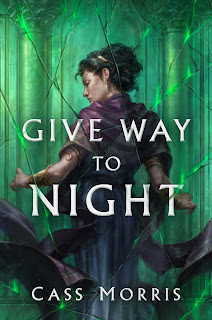R.J. Barker’s work has been a breath of cool, fresh air across the fantasy scene for years. Their latest in the Tide Child series, Call of the Bone Ships, has a lot to love about it. Some eldritch, weird magic that seems to stand just at the edge of human understanding. Majestic and lethal cryptids. The sort of complex characterisation that will have you laugh out loud with a character one minute, and feel the steel barbs of their sorrowful tears in the next. A world filled with odd corners, intricate details, and soaring descriptions of wine-dark seas, thunderous waves and glorious, terrible craft that sail upon them. Yeah. The tl;dr right here is that if you read The Bone Ships and wondered if the sequel held up to the already very high standards of its predecessor - yes. The answer is yes. This is a story of blood in the water, of piratical boardings, of fights that start blade to blade and end edge to edge, one inch from disaster. It’s a story that reminds us that you can lose everything. That heroism has a price. But also of the necessity of virtue, the strength of it, and the value of pride and loyalty. If the ice-soaked sea is the stage, still it’s those upon it that make the story sing.
And sing it does. A full throated roar in harmony, a melody that wraps compassion around friendship and sacrifice. This is a book that will grab you by the heart and by the guts, and not let go until it’s done.
Our main perspective on this world come from Joron, a man who spent much of the previous book finding out how far it was to rock bottom, and then starting the long climb back up to the person he wants to be, inspired by the leadership of a Captain who gave him the opportunity to earn respect, earn trust, and change the world. Joron here is wiser, kinder, perhaps a bit more settled in his sense of self. The growing bonds between Joron and the crew whom he helps oversee are a delight to watch, built on countless small acts of humanity and friendship, backed by moments of heroism and heart-stopping action. Joron still carries his scars, but is learning to bear them a little better. Still, the price of this is that now he has attachments, has people he cares about. Wher ebefore he might have simply accepted the worst under the black dog of depression, now he cares, wants respect, wants to build a life. And in becoming a better person, or at least one more whole, he’s also become more vulnerable. THe portrayal of a man damaged, often in over his head, and struggling with the vagaries of circumstance is beautifully done. It has the emotional rawness that makes it feel genuine, and a certain truth sears through the pain and the trust, the faith of Joron in his people and their acceptance of him. Mind you, it’s not all good news - Joron is going to find out the hard way that now he has more to lose, and this is a world quite keen to take it from him.
Speaking of which, the world remains as vivid as ever, as marvellous as ever, as terrifying and strange and wondrous as ever. There are still dragons stalking the crashing waves of a space defined by the spaces between islands. Humanity is still (with apologies to Pratchett) barely on the right side of the rising ape. Those who bear children not marked by the poisonous environment are still an aristocracy, and like any aristocracy, they still hold to their system of power. There’s oppression, and war, and, worst of all, politics. Oh yes, Joron has stepped into a (metaphorical) whirlpool. Because this is a story filled with quiet intrigues. With betrayals. He’s a man whose seemingly sound footing in the world may be swept away, as we uncover the secrets, half truths and bloody bargains that help the Bern keep their iron grip on the levers of power. As we see how the powerless fare in a society structured to discard them. As the Guillaume, avian masters of magic, and mutilated slaves, reveal a little more of their secrets. As the dragons roar in the deep.
It’s hard, so very hard to talk about this book without spoiling it. So, forgive that digression. But think on this. The world drawn here is, at turns, one capable of displaying appalling atrocity and evoking true wonder. The people - Joron, and the crew of the Tide Child, misfits, miscreants, rebels all - are fiercely, searingly human. They live, love, hurt, bleed, and hope. They live the comedy and tragedy of our lives, cast upon an ocean swept by storms of magic. The same, but different. Different, but the same. They’re people, and damn good ones, at that (well...some of them!). And the story, well, it has its twists, and its turns, and you’ll be torn between inhaling each page to see what happens next,, and not wanting the book to end. It’s got everything - the grand, sweeping elements of an epic tale. Sea shanties. Boarding actions. Blood on the decks, and in the water. New secrets and old magic. But it’s also devastatingly, beautifully personal - with quiet moments, moments of honesty, moments of epiphany, times of betrayal and times of quietly powerful love. It’s a story that, once again, will not let you go - and one you won’t want to put down until it’s done
I certainly couldn’t. I miss the Tide Child and its crew already. I can only suggest that you join them on their journey. You won’t regret it.



